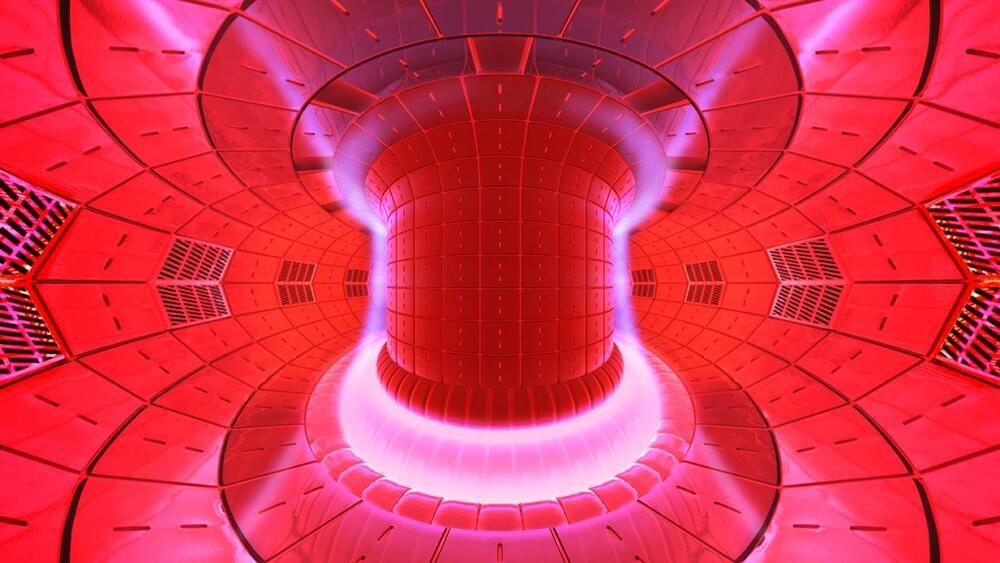Two developments in 2025 will mark a decisive shift in the decades-old quest to generate cheap and abundant energy from nuclear fusion.




Scientists have developed a novel technique using high-energy particle collisions at the Relativistic Heavy Ion Collider (RHIC), a U.S. Department of Energy (DOE) Office of Science user facility for nuclear physics research located at DOE’s Brookhaven National Laboratory. Detailed in a newly published paper in Nature, this method complements lower-energy approaches for studying nuclear structure. It offers deeper insights into the shapes of atomic nuclei, enhancing our understanding of the building blocks of visible matter.
“In this new measurement, we not only quantify the overall shape of the nucleus — whether it’s elongated like a football or squashed down like a tangerine — but also the subtle triaxiality, the relative differences among its three principle axes that characterize a shape in between the ‘football’ and ‘tangerine,’” said Jiangyong Jia, a professor at Stony Brook University (SBU) who has a joint appointment at Brookhaven Lab and is one of the principal authors on the STAR Collaboration publication.
Deciphering nuclear shapes has relevance to a wide range of physics questions, including which atoms are most likely to split in nuclear fission, how heavy atomic elements form in collisions of neutron stars, and which nuclei could point the way to exotic particle decay discoveries. Leveraging improved knowledge of nuclear shapes will also deepen scientists’ understanding of the initial conditions of a particle soup that mimics the early universe, which is created in RHIC’s energetic particle smashups. The method can be applied to analyzing additional data from RHIC as well as data collected from nuclear collisions at Europe’s Large Hadron Collider (LHC). It will also have relevance to future explorations of nuclei at the Electron-Ion Collider, a nuclear physics facility in the design stage at Brookhaven Lab.

Researchers have developed a method to precisely locate hydrogen atoms within nanofilams, a breakthrough with significant implications for superconductivity and other material properties.
Their study, employing nuclear reaction analysis and ion channeling, revealed how hydrogen and its isotopes are distributed within titanium nanofilms, offering insights into tuning the material properties for various applications including hydrogen storage and catalysis.
Impact of hydrogen on material properties.

Researchers use the H.E.S.S. Observatory to overcome the challenge of detecting high-energy cosmic-ray electrons and positrons, revealing their likely origins close to our solar system through advanced data analysis techniques.
The Universe is filled with extreme environments, from the coldest regions to the most energetic sources imaginable. These conditions give rise to extraordinary objects like supernova remnants, pulsars, and active galactic nuclei, which emit charged particles and gamma rays with energies far exceeding those produced by the nuclear fusion processes in stars—by several orders of magnitude.
Challenges in Cosmic Ray Detection.

Banks of computer screens stacked two and three high line the walls. The screens are covered with numbers and graphs that are unintelligible to an untrained eye. But they tell a story to the operators staffing the particle accelerator control room. The numbers describe how the accelerator is speeding up tiny particles to smash into targets or other particles.
However, even the best operator can’t fully track the miniscule shifts over time that affect the accelerator’s machinery. Scientists are investigating how to use computers to make the tiny adjustments necessary to keep particle accelerators running at their best.
Researchers use accelerators to better understand materials and the particles that make them up. Chemists and biologists use them to study ultra-fast processes like photosynthesis. Nuclear and high energy physicists smash together protons and other particles to learn more about the building blocks of our universe.

The plan includes seven major recommendations.
The first is creating a new state authority to oversee nuclear development. They’ll also establish a single point of contact to help companies navigate the complex permitting process.
Education is also a big focus of the plan. It calls for partnerships with community colleges and universities to train workers for these high-tech jobs.


CIEMAT scientists advance fusion energy for efficient reactors.
For decades, scientists have been working to develop reactors that can achieve fusion to meet the increasing need for clean and limitless energy.
The success of such experiments depends on multiple key factors, including optimized magnetic fields that could display enhanced fusion plasma confinement.
Introduced by researchers at Laboratorio Nacional de Fusión–CIEMAT, the new family of magnetic fields is claimed to be better suited for confining particles in fusion devices.

Physicists have been trying to design fusion reactors, technologies that can generate energy via nuclear fusion processes, for decades. The successful realization of fusion reactors relies on the ability to effectively confine charged particles with magnetic fields, as this in turn enables the control of high-energy plasma.